CHARTS
Evaluating books for UKLA book awards with the class
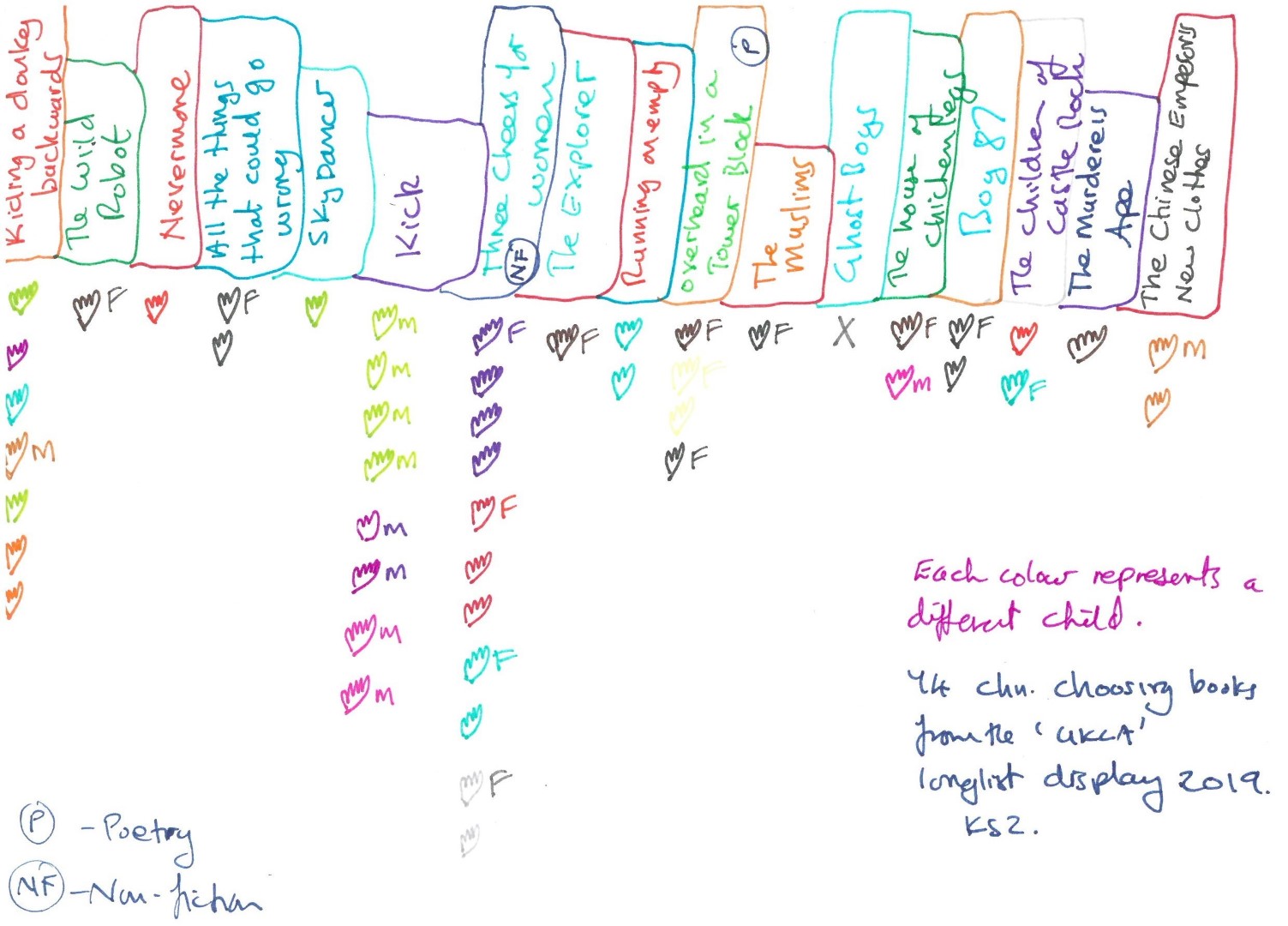
"There's another one, 'Ghost Boys', which I put a cross beside because in our UKLA group we all decided it was really a Key Stage 3 book. It's a really fantastic book but it's not for Key Stage 2. It's about a boy, he's narrating it but he was shot in the back, a black child shot in the back by a white policeman in Chicago and one chapter is him narrating from up above, the aftermath of this and the next chapter is the events leading up to. It's a really fantastic book but it wasn't for Key Stage 3 so I've sort of hid that one."
Reflecting on being a 'silent teacher'
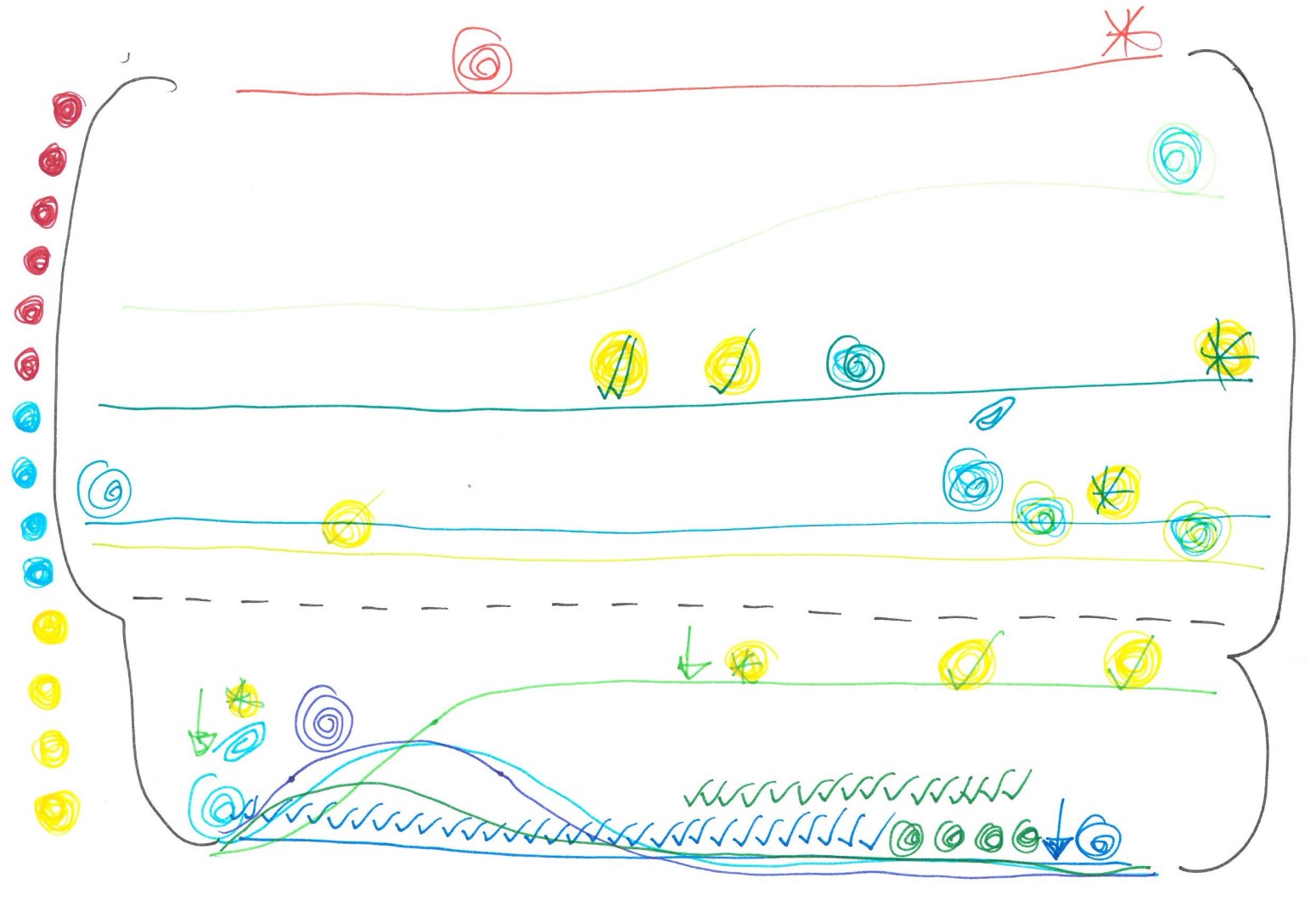

"What I've ended up tracking is mostly noise levels, which I could have predicted really. These are two ears lovely drawn! As the morning progresses the noise levels get higher. The base line is the dotted line and there were peaks where they were like there's a flurry of I'm not really sure what I'm doing and they were asking others and then they solved it and they were back down and carrying on. The ticks represent children on task, so to start with perfect, I was like, oh, this is really good, noise levels are low, they're getting on with their work, fantastic, but then as it gets on there's two or three ticks and they'd all got on to the points I'd left in the instructions that once you finished that, thinking they shouldn't because we have a full hour for guided reading, go and read a book. So about half the class were going to read a separate book."
Working smarter rather than harder

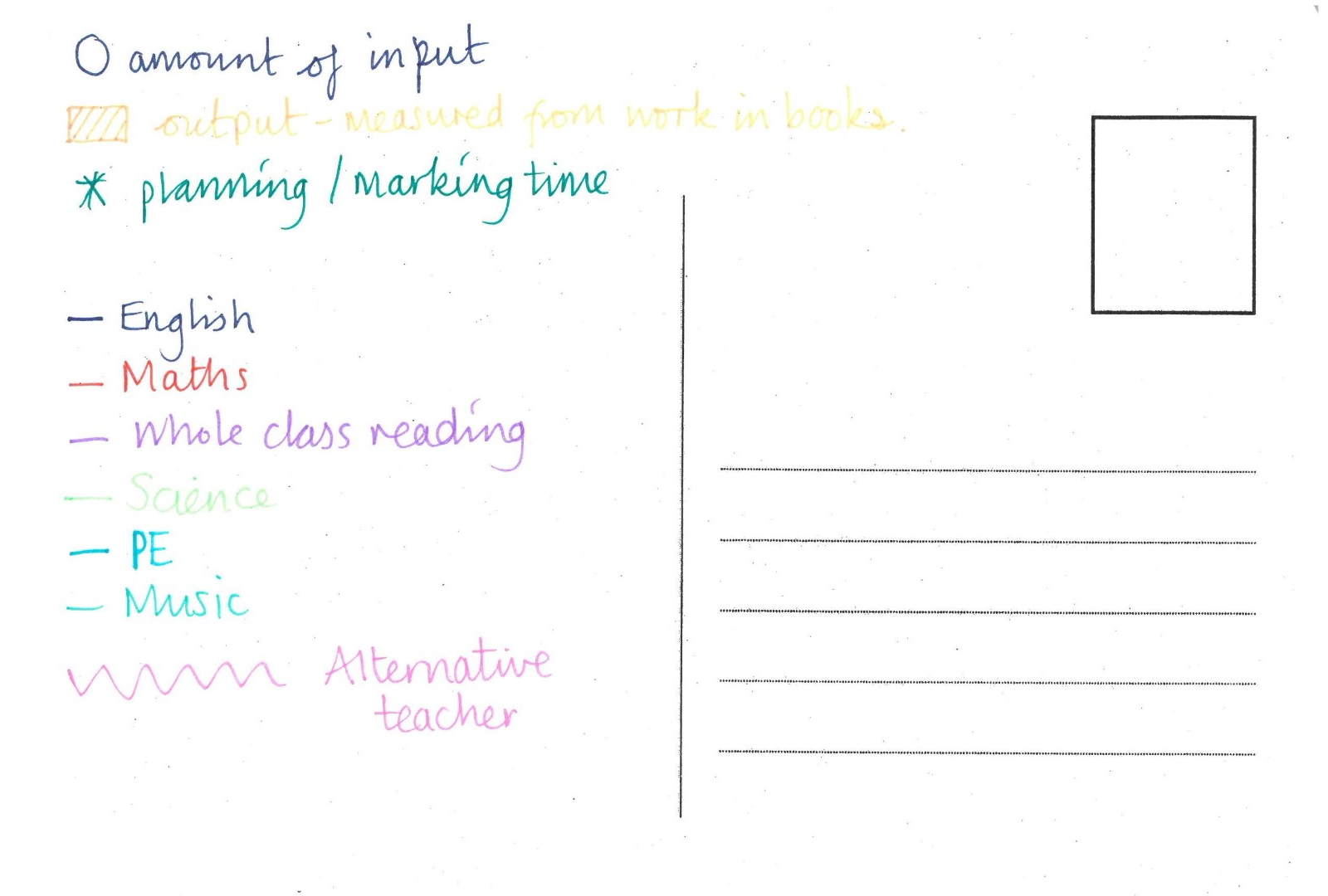
"So basically the circles on the sheet are the amount of input that a teacher has to give during a lesson and the days track across as you would read. The hashed boxes behind are the output of the child, so as you would imagine when there's a bigger input from the teacher that takes most of the lesson so the output tends to be a little bit shorter. When there's less input the output is greater because obviously you're giving children more time to actually do what they should be doing and then the asterisk crosses in the middle are the amount of time that went in to planning the lesson."
Conversations around English and literacy
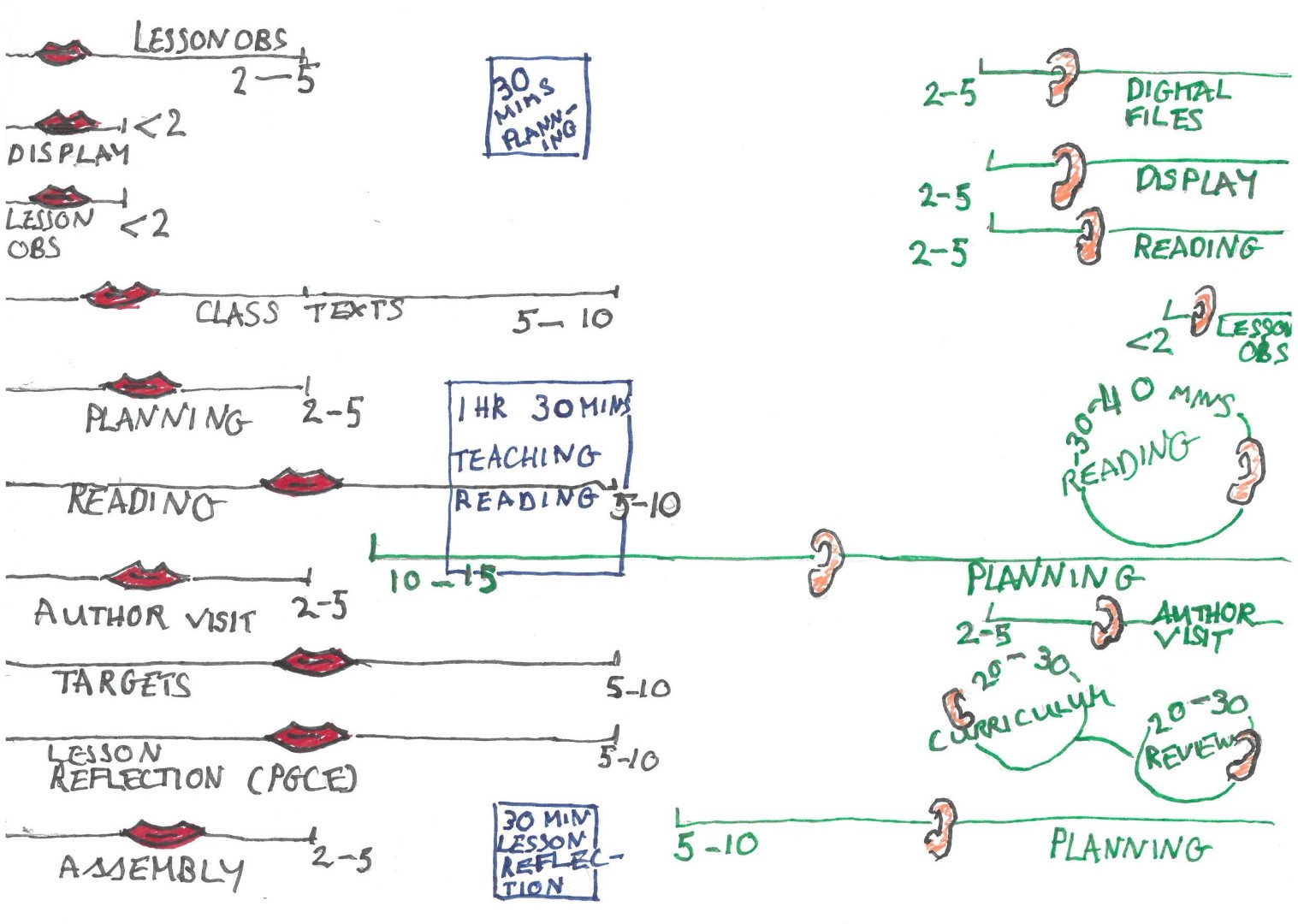
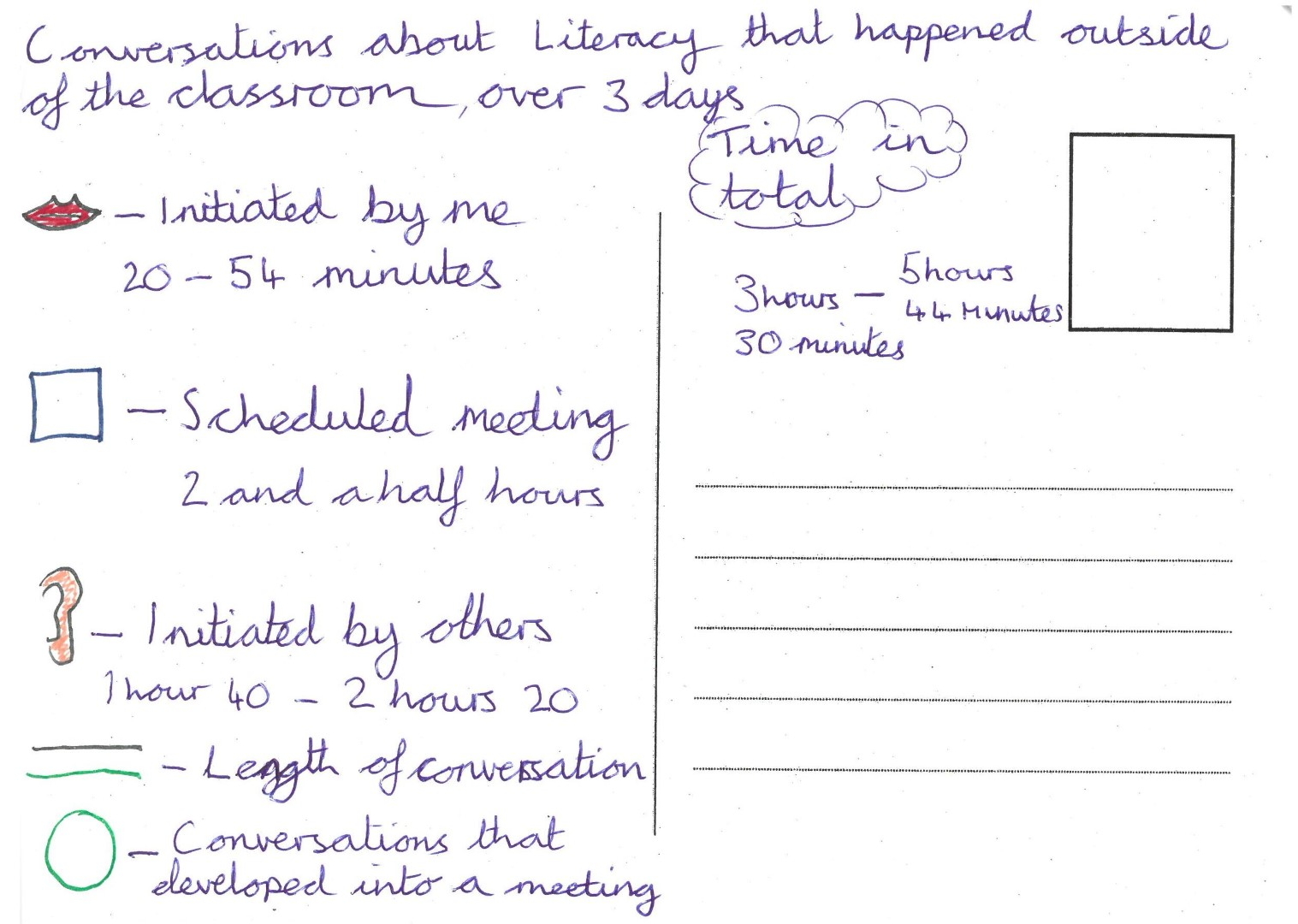
"I guess where the thought process, where it started and where it took me to was that actually a huge part of what we do is pass each other and talk and see each other in the staffroom and talk and it's quite an ephemeral sort of activity, you don't have any tangible evidence for it but it's a very real type of work. Again, I think quite a lot of – I get the sense that a lot of importance is placed nowadays on things where we can measure the impact. I feel like you hear this phrase over and over again about what are the outcomes and what are the outcomes, ... So I think for me it was quite – It was that nagging feeling that it's something worthwhile's happening and just because we can't measure the impact of it, it sort of goes relatively under-appreciated maybe."
How a teacher's time is apportioned
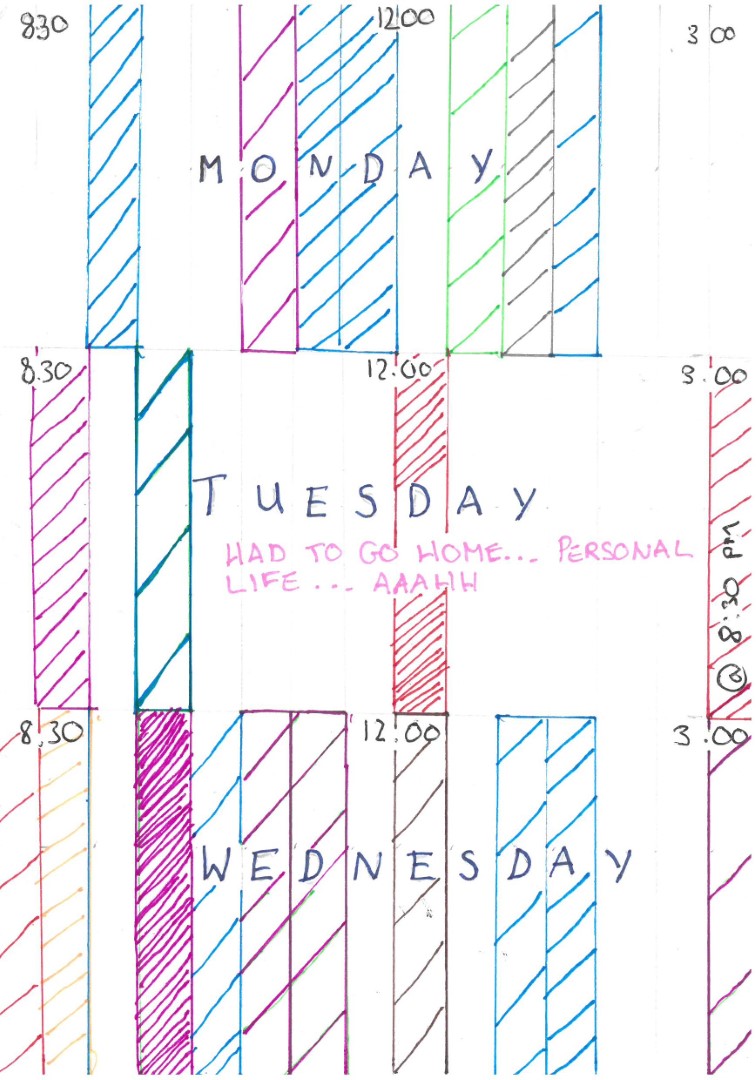
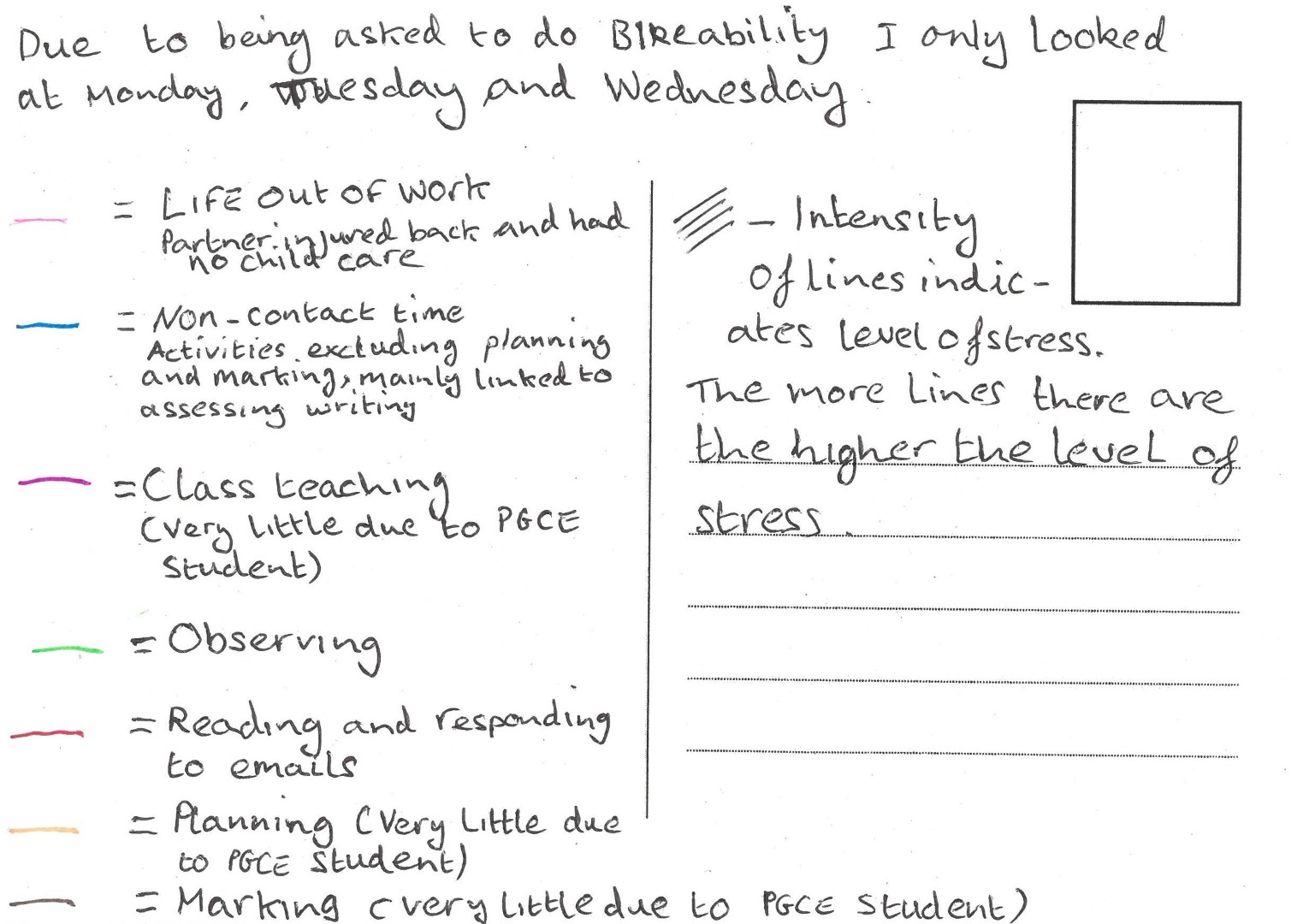
“So basically the different colours represent different things that I did with my time so the blue is non-contact time activities excluding planning and marking which I've done a separate colour for and most of them at the time were linked to – we've completely changed our writing assessment this year so a lot of it is linked to writing assessment. The purple is class teaching which there isn't an awful lot of because I had a PGCE student at the time. The green is observing, again, said PGCE student for English and literacy lessons. Red is reading and responding to emails. Orange is planning, and again there's not much because of my PGCE student, she was doing lots of that at the time and marking again and it was very low on that because she was doing most of the marking because at the time she was doing most of the teaching.”
What do children value in their English learning?


“This is a reflection of my children. I got a group of them and I asked them – what do they value about their English learning this year? What I said to them was, 'Choose something that makes you proud.'
So the sustained story writing was the purple and the majority of them chose that. The red was the factual writing so just one child chose that. Retelling through pictures and stories three children were proud of and then vocabulary was one but then I looked at those categories and then I wondered about, particularly for the story writing, whether they were proud of it because I'd said I really liked it so I went back through and said which of these children, because I use more verbal … so I remembered the conversations. Five of the ones that chose sustained story writing I'd sat down and gone through why they'd done so well and which parts were really good so I wondered if they're remembering that feeling more than themselves being inherently proud of it.”
Books as a classroom resource
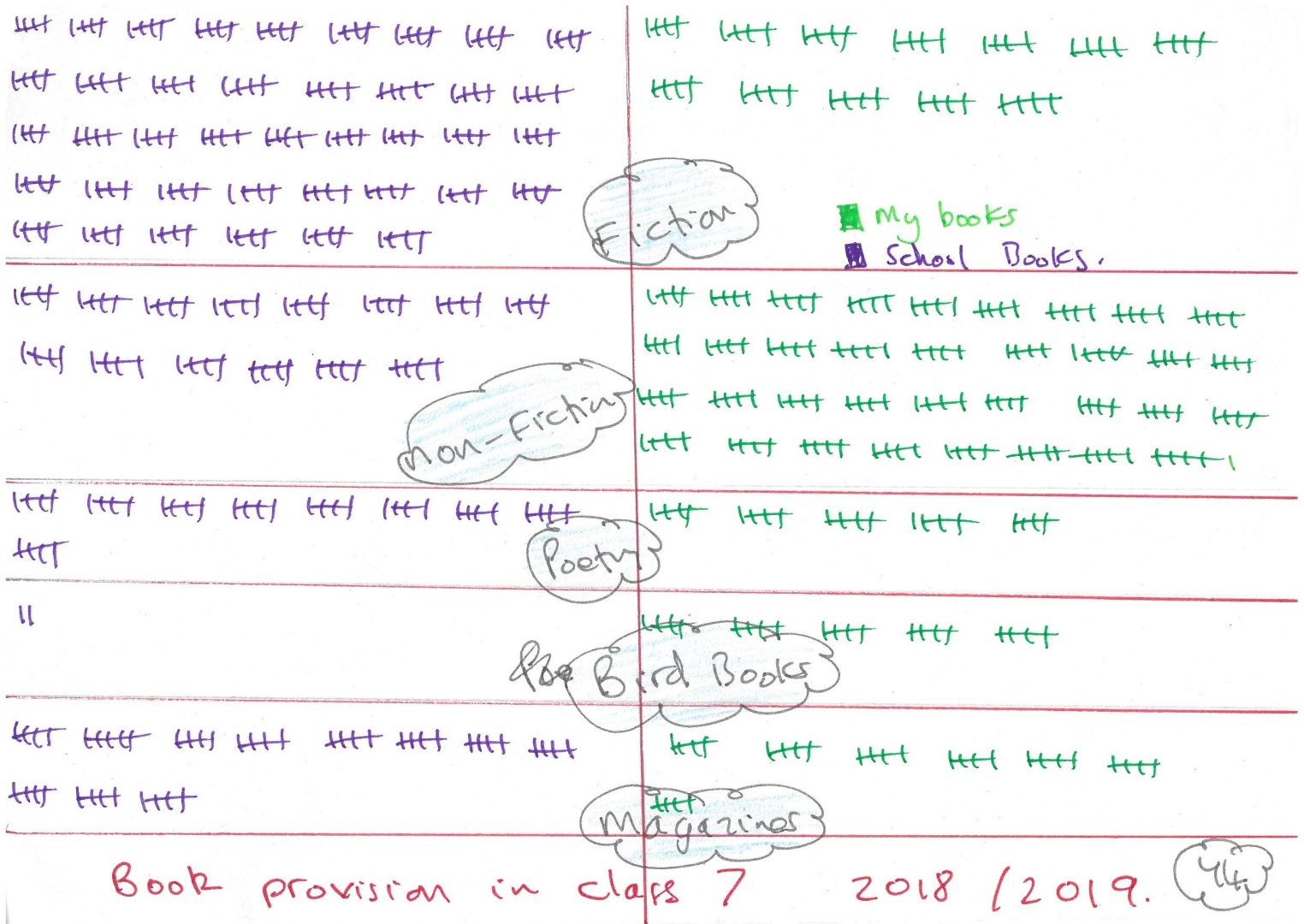
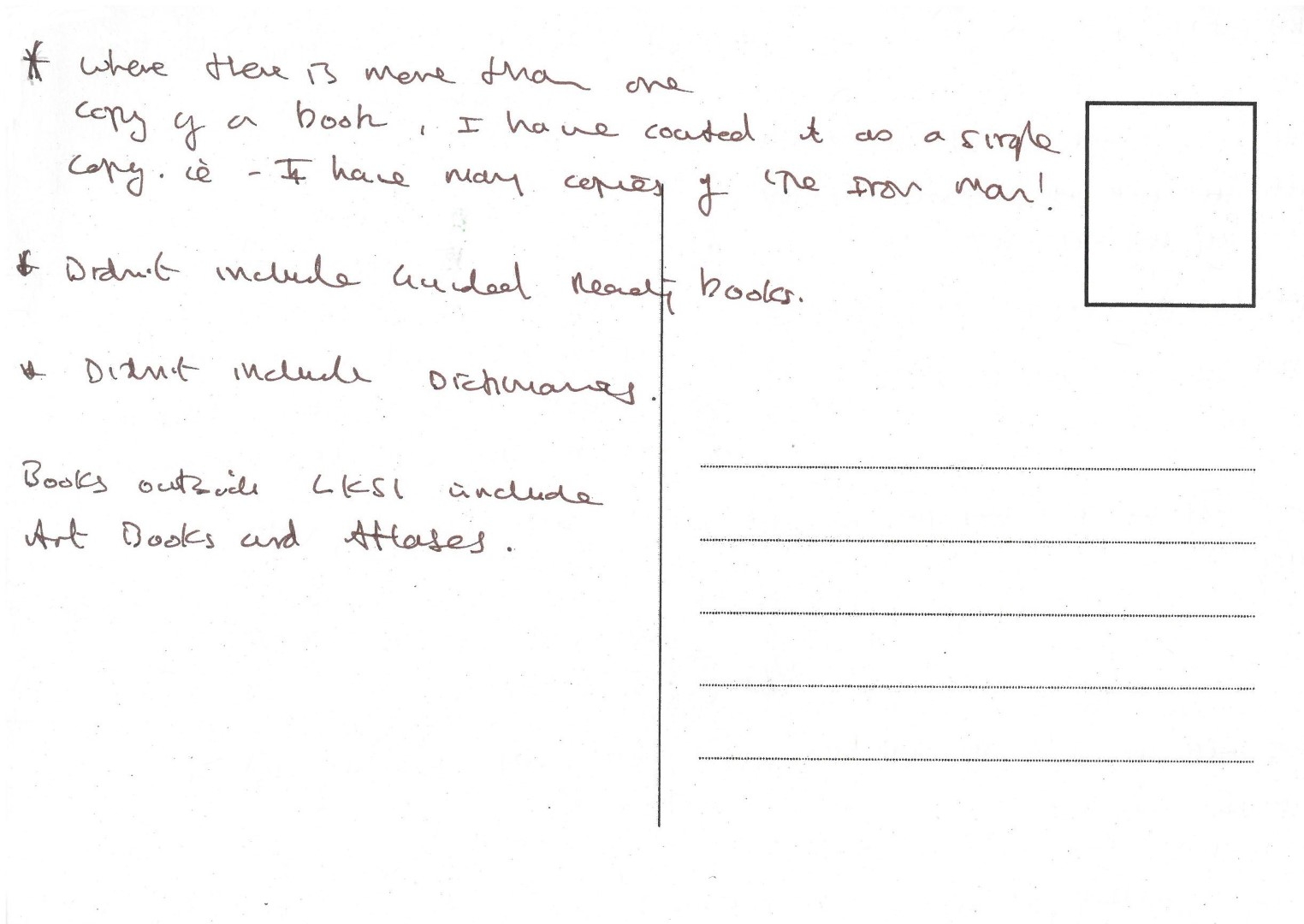
“In the end I decided in my classroom for me, my literacy provision really is or are the books that are available ... from a good book you can get almost any genre of writing you want to. So I set about counting the books in the class because I do realise a lot of them are mine! Some of them are books that were my own children's, some of them I've picked up in all sorts of places, second-hand bookshops or teachers that have left.
For non-fiction, which I wasn't surprised, that's mine. Loads, loads more than school provides. Having said that maybe because I have so many I haven't searched around the school for books because I find what I have is usually better than anything the school's got. Again, it varies from ones my own children had to ones I just magpied from all sorts of places. ”